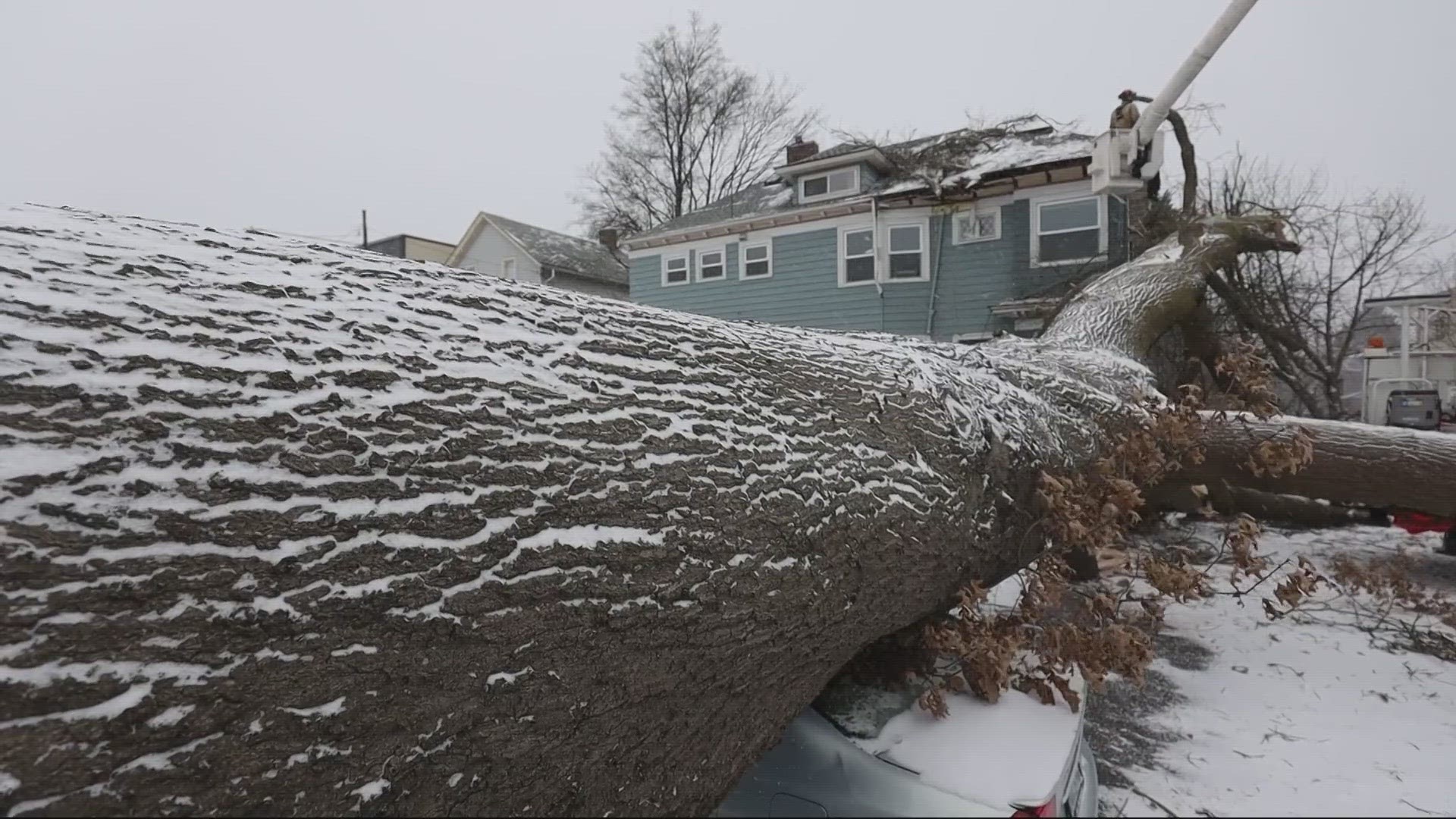SALEM, Ore. — Oregon Gov. Tina Kotek announced a statewide emergency declaration Thursday night due to the ongoing series of winter storms impacting much of the state. The order is an expansion of a previous state of emergency declaration that was specific to Lane County.
"Thousands of people across the state have been impacted by the storm, including power outages, lack of transportation, and an array of safety concerns that come with severe weather," Kotek said in a statement. "The state has been working with counties as they assess needs, including critical federal resources that can be unlocked by a statewide emergency. I declared a state of emergency in Lane County on Tuesday, and now we are heeding the call from additional counties to escalate."
The statewide emergency declaration will allow the state to free up additional emergency response and recovery resources to step in where local resources have been exhausted, Kotek's office said. It also opens up a pathway for counties to also access federal support through the Federal Emergency Management Agency, primarily to help with highway, telecommunication and power system repairs.
"At the local level, their local emergency managers are doing the yeoman's work," said Erin McMahon, director of the Oregon Department of Emergency Management. "So when they reach out to the governor and say 'hey, we need some additional state assistance,' they're going to be looking for potentially outside the local area, bringing in those additional bodies at the state level."
In some cases, that can mean that the state invokes the Emergency Management Assistance Compact to bring in extra personnel and heavy equipment from neighboring states to help with things like reconnecting power lines.
The statewide emergency declaration will also play a big role in helping the state recover and rebuild in the days and weeks after the storm passes, she said, somewhat similar to how the federal government helped out after the 2020 Labor Day wildfires.
"That is a long process of making sure that we're doing those damage assessments and working with our federal partners to see, if we've met certain thresholds at the state level, whether or not we can turn on additional federal monies that come to us under the Stafford Act," she said.
The Stafford Act is the federal law that governs how FEMA allocates disaster relief funding. The state emergency declaration could lead to individual federal assistance for people whose homes were damaged, McMahon said, but it will depend on the level of individual damage that the state reports to FEMA. If the damage is sufficiently widespread, it could trigger a Presidential Disaster Declaration, which would make the Stafford Act funding available.
"The primary source of reimbursement and recovery is really dealing with your insurers, and understanding what your opportunities (are) to support you with your local insurance is really the first course of action," she added.
The state has already been providing support through the Oregon Health Authority and Department of Human Services, including by running a hotline to get volunteer medical professionals assigned to help staff emergency warming shelters and by delivering hundreds of meals to shelters, according to an earlier news release from Kotek's office. Oregon has also been running a State Emergency Coordination Center since Jan. 12.
Lane County declared a local state of emergency on Tuesday evening due to the ongoing storm conditions and severe damage to the electrical grid, and asked Kotek to make the same declaration for the county at the state level, which she did later that same night.
Multnomah, Lincoln, Washington and Hood River Counties have also all declared local states of emergency, along with the Confederated Tribes of Siletz Indians and have been receiving state support, Kotek's office said at the time, but added that "they do not currently require the additional assistance that a state emergency declaration unlocks."
The Thursday news release again noted that Multnomah, Lincoln, Washington and Hood River had each declared local emergencies, but this time did not include the sentence saying they didn't need more assistance.
Multnomah County opened emergency warming shelters on the evening of Jan. 12 and kept them open for the next five days, but then closed them on Wednesday. Despite ongoing freezing rain and ice on many city sidewalks, the county said the weather conditions no longer met its thresholds to keep the shelters open.
When asked if the state could do more to help keep warming shelters open, McMahon said the state Department of Human Services already works to support the counties even before an emergency declaration is put in place, but it's ultimately up to the counties to decide when to open and close shelters.

